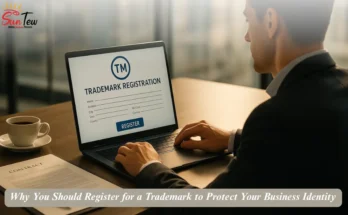Today’s crowded marketplace makes protecting your brand non-negotiable. Yet many founders blur two pillars of intellectual property copyright and trademark even though they guard different assets. Copyright registration secures original business content; trademark registration protects identifiers customers recognise, like names, logos and taglines. Getting these registrations right strengthens market reputation, deters copycats and gives you enforceable rights. In this guide, you’ll learn the difference between copyright and trademark, the legal basics that matter for Indian businesses, and step-by-step overviews of how to register a trademark and how to register copyright. We’ll also cover timelines, fees, and what each delivers for growth, partnerships and investor confidence. By the end, you’ll know exactly what to register, when to do it, and how to build a defensible brand portfolio. Clear choices here stop brand theft before it harms your reputation online. Let’s begin with what copyright registration means—and how it protects your creative business assets.
What is Copyright Registration?
Copyright registration protects the original content your business creates—text, visuals, audio, video, and code—and gives you enforceable proof of ownership if a dispute arises.
Definition and business relevance
Copyright is a legal right over original expression (not ideas). For businesses, it applies to website copy, blogs, brochures, UI/design layouts, infographics, product manuals, photographs, brand videos, jingles, and training modules. Registration significantly strengthens control over copying, distribution, and licensing.
Legal framework in India
Under the Copyright Act, 1957, owners enjoy exclusive rights. Protection generally lasts for the creator’s lifetime plus 60 years (with specific rules for films, sound recordings, photographs, and anonymous works).
Rights and protection
Registration records authorship and confirms exclusive rights to reproduce, publish, communicate to the public, translate, or adapt the work. You can license usage and seek injunctions against plagiarism or unauthorised commercial use.
Registration process
- File an online application on the Copyright Office portal. 2) A diary number is generated. 3) A mandatory 30-day waiting/scrutiny period and examination follow; respond to any objections. 4) On acceptance, particulars enter the Register and a certificate is issued.
Typical time frame and fees
In straightforward cases, certificates are issued in about two to three months. Government filing fees vary by category: ₹500 per literary, dramatic, musical, or artistic work; ₹2,000 for sound recordings; ₹5,000 for cinematograph films. Professional assistance, if engaged, adds service fees.
Business benefits
Registration deters copycats, protects digital assets, enables licensing and takedown notices, adds credibility with investors, and provides strong evidentiary value in enforcement.
What is Trademark Registration?
Trademark registration protects your brand identity and the trust customers place in it by giving you exclusive rights over distinctive signs used in trade.
Definition and importance for businesses
A trademark is any mark capable of graphical representation and distinguishing your goods/services—such as a business name, logo, tagline, product name, label, packaging trade dress, or even a distinctive sound. Strong trademarks aid recall, signal quality, and reduce customer confusion.
Legal framework and ownership
In India, trademarks are governed by the Trade Marks Act, 1999 and administered by the Controller General of Patents, Designs and Trade Marks (CGPDTM). Ownership arises from use and/or registration, but registration creates nationwide statutory rights and easier enforcement.
Rights granted
Registration gives the exclusive right to use the mark for the listed classes across India, to sue for infringement, to block confusingly similar marks, and to record rights with platforms or customs to curb misuse.
Registration process
- Conduct a clearance search across relevant classes.
- File the application (word, device/logo, or combined) with specifications.
- Examination and response to objections, if any.
- Publication in the Trade Marks Journal with an opposition window.
- If unopposed or successfully defended, the mark proceeds to registration and the ® symbol may be used. Renewal is due every ten years to maintain protection.
Business benefits
Trademarks build credibility with customers and distributors, also enable franchising and licensing, support valuation during funding or sale, and facilitate national and cross-border brand expansion via Madrid Protocol filings.
Key Differences Between Copyright and Trademark
Both protect business value but serve different objectives: copyright secures creative expression; trademark safeguards market identity and consumer recognition.
| Aspect | Copyright | Trademark |
| Primary purpose | Protects creative business assets | Protects brand identity |
| Covers | Content, designs, visuals, code, music, videos | Logos, names, slogans, trade dress, sounds |
| Governing law | Copyright Act, 1957 | Trade Marks Act, 1999 |
| Governing body | Registrar of Copyrights | CGPDTM |
| Protection duration | Life of creator + 60 years | 10 years, renewable indefinitely |
| Example in business | Website design, ad campaign, product manual | Company name, logo, packaging label |
Nature of protection
Copyright controls copying, adaptation and communication of original works; trademark prevents confusing use of brand identifiers.
Scope
Copyright attaches automatically on creation, registration strengthens enforcement. Trademark rights exist from use, but registration confers nationwide exclusivity.
Cost and time
Copyright filings are usually cheaper and faster. Trademark prosecutions can involve objections/oppositions and take longer, but yield long-term market control.
Ownership transferability
Both are transferable. Copyright licensing monetises content; trademark licensing/franchising expands branded offerings under quality control.
Legal protection
Copyright infringement focuses on substantial similarity in expression—trademark actions target the likelihood of confusion, dilution, and passing off.
Business takeaway
Think “creative outputs” for copyright and “source identifiers” for trademarks. Most growth-oriented brands need both: register key content that differentiates your messaging and lock down names/logos that anchor recognition. Together, they fortify defensible, investment-ready brands globally.
When Should a Business Register Copyright vs. Trademark?
Businesses often need both registrations to achieve full brand protection: copyright secures creative outputs, while trademark protects market identifiers. Using them together closes gaps—your content can’t be copied, and your name or logo can’t be imitated—reducing confusion and risk as you scale. Map priority by risk and revenue: protect identifiers first, then batch-register high-value creative.
When to Choose Copyright
Register when you create marketing content, product designs, videos, photographs, UI layouts, manuals, training modules, jingles, or code that you publish or license. This establishes a dated ownership record and strengthens enforcement for online takedowns and licensing deals—examples: ad agencies, IT companies, media firms.
When to Choose Trademark
Register when establishing a market presence with unique identifiers—brand name, logo, tagline, product line names, packaging trade dress, or a distinctive sound. Early filing blocks look-alike brands and secures nationwide exclusivity. Consider multi-class filings when offerings span categories and future extensions are planned—examples: startups, product manufacturers, retail brands, service firms.
When Both Are Needed
Typical scenario: a company’s logo (trademark) and a promotional video (copyright). The trademark protects recognition and goodwill; the copyright protects the script, footage, music, and edit. Together, they deter copycats across identity and content.
Strategic Advantage
Enhances brand value for investors and buyers by converting brand signals into registered, enforceable assets that appear in diligence. Builds a defensible brand portfolio in competitive markets, enabling franchising, channel partnerships, and cross-border growth with clearer rights and simpler contracts.
Why Businesses Must Protect Their Intellectual Property
Proactive IP protection is essential in a digital-first, copy-and-paste economy where brands scale online and competitors move fast. Registering rights early converts creative effort and brand goodwill into enforceable assets that protect revenue, reputation, and market share. Delays significantly increase risk, costs, and lost opportunities.
- Preventing brand misuse. Registration deters clones, domain and marketplace squatters, and confusingly similar names or look-alike content, reducing dilution and customer confusion.
- Building market trust. Registered copyrights and trademarks signal authenticity, professionalism, and ownership. They strengthen platform verifications, takedown requests, and third-party audits.
- Supporting growth and expansion. Clear rights simplify franchising, distributorships, licensing deals, and cross-border filings: protected marks and content ease onboarding with retailers, aggregators, and app stores.
- Increasing business valuation. Properly registered IP can be valued as identifiable intangible assets. It supports better diligence outcomes, improves bargaining power in fundraising and M&A, and enables royalty-bearing licensing.
- Operational resilience. Documented ownership reduces internal disputes with vendors and contractors, aligns employment IP clauses, and shortens enforcement timelines.
Together, copyright and trademark registration create a layered defence: copyright shields original expression, while trademark secures the signals customers use to recognise you. The result is a stronger, more defensible brand that can scale without losing its identity.
Conclusion
Choosing the right IP strategy is essential to stop brand theft before it starts. Copyright registration safeguards the creative work that powers your marketing and product experiences, while trademark registration protects the names, logos, and other brand identifiers customers rely on. Together, they deter copycats, reduce confusion, and strengthen trust in every channel. For most businesses, the practical path is simple: secure your core trademark early, then register high-value content in organised batches. This layered approach gives you enforceable rights, cleaner contracts, and smoother platform or marketplace enforcement. It also adds measurable value during fundraising, partnerships, franchising, and exits.
Now is the moment to audit your brand assets, map the difference between copyright and trademark to each item, and file where protection matters most. With the right registrations in place, you control your identity, monetise your creativity, and scale confidently without losing the distinct story that sets your business apart.
Looking to protect your business identity and creative assets? Contact Suntew.biz for expert assistance in copyright and trademark registration. Our professionals simplify the legal process and help you safeguard what truly belongs to your brand.
FAQs
1. What is the main business difference between copyright and trademark?
Copyright protects original creative expression (content, videos, designs). A trademark protects brand identifiers (name, logo, tagline) that signal the source of goods or services.
2. Do I need both copyright and trademark for my company?
Usually yes. Copyright secures the creative assets you publish; trademark registration secures your market identity. Together, they deter copycats and reduce customer confusion.
3. How long do copyright and trademark protections last in India?
Copyright generally lasts for the creator’s life plus 60 years. A registered trademark lasts 10 years and can be renewed indefinitely in 10-year cycles.
4. Can startups register a trademark before launching their product?
Yes. You can file on a “proposed to be used” basis. After launch, maintain proof of use to defend the mark and ensure smooth renewals or enforcement.
5. Is it mandatory for small businesses to register their IP?
Not mandatory—but registration greatly strengthens rights, speeds takedowns, enables nationwide enforcement, and improves credibility with partners, platforms, and investors.



